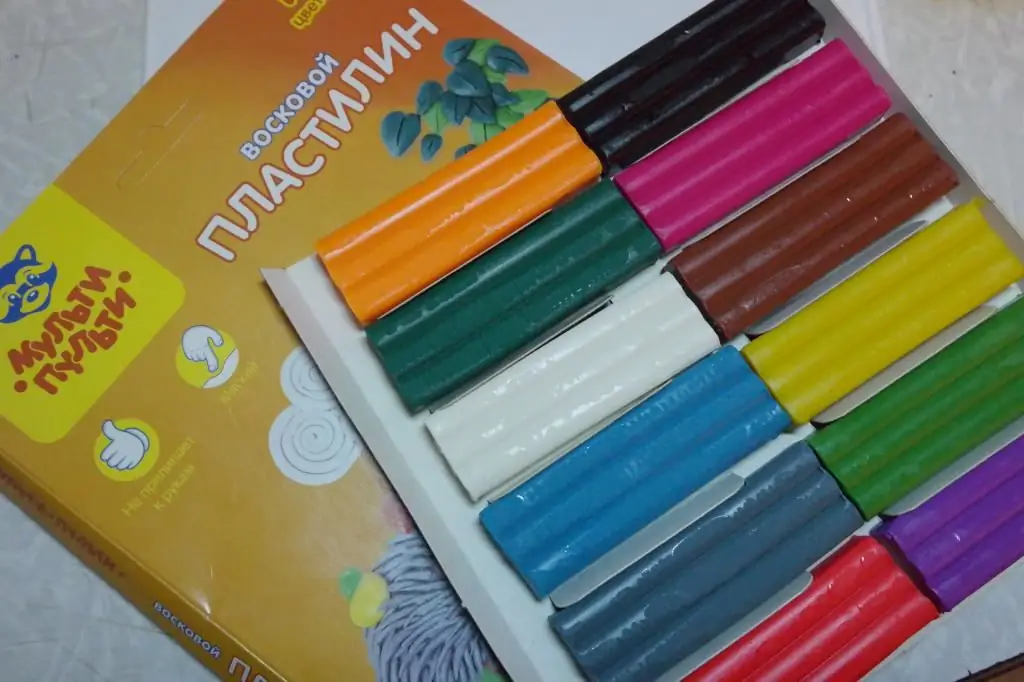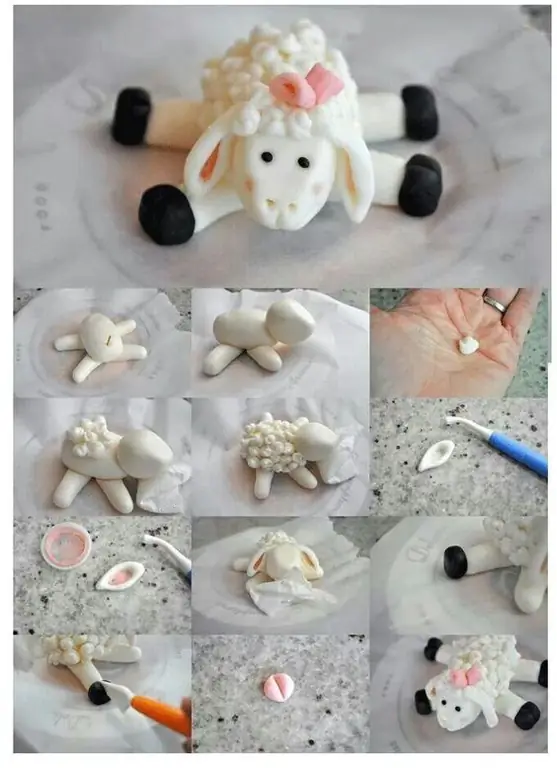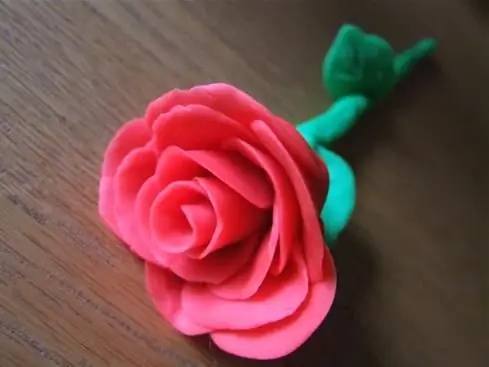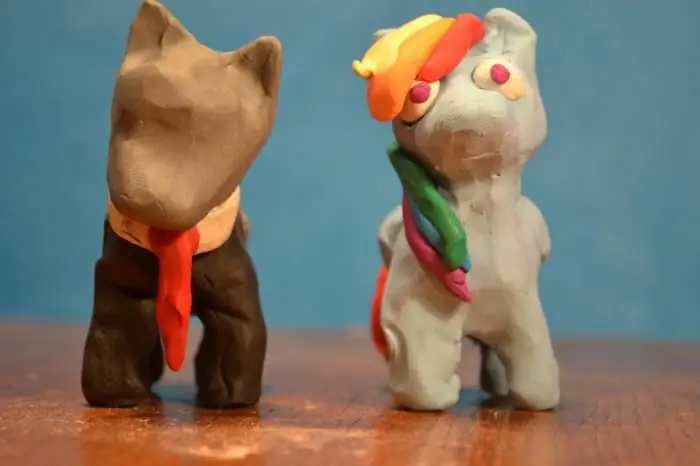
Inhaltsverzeichnis:
- Autor Sierra Becker [email protected].
- Public 2024-02-26 04:43.
- Zuletzt bearbeitet 2025-01-22 22:11.
Vielleicht nicht nur heute, sondern auch morgen. Und sehen Sie, übermorgen. Dies ist eine so mühsame Aufgabe, dass ein Tag nicht ausreicht. Obwohl es natürlich sanfte Techniken und einfache Zeichnungen gibt, die für ein sehr junges Alter entwickelt wurden. Aber Sie müssen zugeben, dass ein Erwachsener, bevor er einem Kind etwas beibringt, das Thema selbst von allen Seiten studieren und die praktische Seite der Materie beherrschen muss. Und dafür müssen Sie mehr als hundert Plastilin-Erbsen aufrollen!
Mosaik. Geschichte und Gegenwart
Menschen haben seit der Antike Fragmente verschiedener Materialien zusammengefügt. Die Wände und Böden wurden zuerst mit Mosaiken bedeckt, um sie zu nivellieren.
In der Folge wurde das Mosaik zur Dekoration von Tempeln, Innenräumen, Möbeln und Gebrauchsgegenständen.

Von kleinen Steinen und Keramikstücken in der fernen Vergangenheit hat diese Kunstform bis heute in einer Vielzahl von Materialien überlebt. Darunter sind traditionelle:
- Glas;
- Kachel Fliesen;
- sm alt;
- Steine;
- Perlen;
- Keramik;
- Spiegelsplitter;
- Muscheln.
Kombinationen von Farben und Texturen, die Fähigkeit, ungewöhnliche Oberflächen zu dekorieren, machen das Potenzial von Mosaiken als dekorative Kunstform grenzenlos.
Es gibt sogar solche Mosaike:
- Blumen;
- Lebensmittelgeschäft;
- Sch altfläche;
- Briefpapier;
- Schraube und Nagel;
- Ei;
- sand;
- kork;
- Süßigkeiten;
- Müll;
- Bargeld;
- Zahnstocher;
- Tabletten;
- Textil.
Und die Liste ist endlos. Ein traditionelleres Aussehen wird hier beschrieben - ein Plastilin-Mosaik.

Über die Vorteile der Modellierung
Plastilin ist ein sehr geeignetes Material für diese Dekorationsmethode. Seine Helligkeit und Plastizität, eine große Auswahl an Farben ermöglichen es Ihnen, Stillleben, Landschaften und Porträts zu erstellen.
Für ein großes und komplexes Plastilin-Mosaik bereiten Handwerker Tausende von Kugeln in der Größe von fast einem Hirsekorn vor.
Was Kinder betrifft, formen sie immer gerne. Der Vorteil dieser Aktivität ist, dass sie entwickelt:
- Fantasie;
- Feinmotorik;
- Ausdauer;
- Ordnung;
- Engagement;
- Auge;
- Farbwahrnehmung;
- aufmerksam.
Wo bekomme ich eine Vorlage?
Zunächst solltest du dir überlegen, was passieren wirddargestellt auf Plastilin-Mosaik. Zeichenvorlagen können von Hand gezeichnet, in einem Bastelgeschäft gekauft oder auf einem Drucker ausgedruckt werden. Das können alle geeigneten Bilder sein, sogar aus Malbüchern für Kinder. Zunächst sollte dem Kind etwas Einfaches angeboten werden.

Was werden wir formen? Moltebeeren
Hier wird vorgeschlagen, ein kleines Panel zum Thema "Moltebeere" zu erstellen.
Die ganze Pflanze und ihre Beeren nennt man Moltebeeren. Die Nordländer nannten sie königlich. Moltebeeren haben auch andere Namen:
- Sumpfwächter;
- Sumpfbernstein;
- Moosaugen;
- arktisches Orange;
- nördliche Himbeere.

Moltebeeren haben nur 2-3 Blätter und 1 weiße Blüte mit fünf Blütenblättern. Seine Frucht sieht aus wie eine Himbeere. Eine solche Frucht, eine Steinfrucht, lässt sich sehr gut mit Hilfe einzelner kleiner Partikel darstellen.
Bevor Sie mit der Arbeit beginnen, bereiten Sie ein Blatt Pappe oder Papier vor und zeichnen Sie ein Diagramm der zukünftigen Zusammensetzung.

Arbeitsvorbereitung
Um ein Plastilin-Mosaik zu erstellen, brauchen wir:
- Ein Deckel von einer Packung (Dose) eines Milchprodukts: Mayonnaise, Eiscreme, Hüttenkäse (wenn es nur sauber und ohne Aufkleber wäre).
- Plastizin. Dabei kann die Wahl des Schöpfers durch nichts eingeschränkt werden, da das Handelsnetz heute mit einer Vielzahl an Waren für das Handwerk glänzt.
- Es gibt 2 Optionen für diesen Artikel:

- Wir erstellen ein Plastilin-Mosaik mit einer vorgefertigten Schablone aus Pappe oder Papier. Wenn die Kappe transparent genug ist, kann das Papier mit der Schablone auf der Rückseite mit Klebeband befestigt werden.
- Auf deckender Basis mit einem Marker zeichnen wir eine Skizze einer selbst entwickelten Zeichnung.
In diesem Fall wird das Moltebeerbild auf die Basiskappe übertragen.
Plasticine-Mosaik. Modellierung
Es wurde eine ziemlich komplexe Handlung gewählt, daher ist es besser, ein Bild vor sich zu haben, auf dessen Grundlage sie entwickelt wird. Wenn das „Kreativität aus dem Kopf“ist, sollten Sie diese dennoch zunächst farbig darstellen und vor sich hinlegen. Das hilft bei der Arbeit.
- Lass uns zuerst viele kleine grüne Kugeln kleben. Die kleinsten legen die Umrisse der Pflanze fest.
- Den Hintergrund mit größeren Kugeln füllen. Lassen Sie den Rand intakt, er wird eine andere Farbe haben.
- Hellgrüne Klumpen legen den gesamten Rand des Blattes und die Adern darauf. Um das Plastilin-Mosaik auf der Basis zu h alten, müssen die Details natürlich gedrückt werden, aber nur sehr leicht, um keine F alten zu bilden.
- Aus dem dunkelsten Grünton rollen wir Plastilin-Rohlinge auf. Wir füllen den verbleibenden Platz des Blattes damit aus.
- Nehmen Sie Ocker, Terrakotta und braune Knetmasse. Mit ihrer Hilfe erstellen wir die Beine einer Blume und einer Beere:lege sie mit kleinen Kugeln.
- Wir machen Moltebeeren mit orangefarbenen und roten Erbsen. Kleiner Trick: Für mehr Natürlichkeit kann Plastilin ineinander gemischt werden.
- Blütenblätter mit weißen Knetekügelchen bestreichen. Wenn Sie besonders schattige Stellen darstellen, können Sie Grau hinzufügen, aber nur sehr kleine Körner und sehr wenig.
- Füllring mit gelben, weißen und orangefarbenen Kugeln.







Das Panel ist fertig!
Vorsichtsmaßnahmen für den Umgang mit Plastilin
Hier ist so eine schöne Moltebeere herausgekommen: einfach ziehen, um sie zu pflücken und zu essen. Aber ein solches Schicksal droht diesem Werk nicht, da es immer noch für ältere Autoren bestimmt ist. Solch sorgfältige und heikle Arbeit übersteigt die Kraft von Kindern.
Aber Muster und Techniken können auch für die ganz Kleinen entwickelt werden. Und sie beschäftigen sich mit Plastilin-Mosaiken mit nicht weniger Freude und Fleiß als die Ältesten. Bevor Sie mit einem Kind arbeiten, ist es ratsam, ein Gespräch über die Regeln für die Arbeit mit Plastilin zu führen: Dieses Material kann nicht gegessen werden, es ist schwierig, Oberflächen abzureiben und Kleidung abzuwaschen. Es ist wichtig, Ihrem Kind beizubringen, beim Arbeiten vorsichtig zu sein.
Empfohlen:
Die Größe eines Polaroidfotos. Ist Polaroid heute noch aktuell?

Ein Sofortbild kann jetzt mit jedem Smartphone aufgenommen werden. Ein paar Berührungen – und jetzt können Ihre Freunde, Verwandten oder Verwandten Ihr Foto sehen. Trotzdem greifen die Hände nach den guten alten Polaroids, die mit einem angenehmen Rasseln ein echtes analoges Foto abgeben
Wir machen Tiere aus Plastilin. Kinderhandwerk aus Plastilin

In dem Artikel erfahren Sie, wie Sie Tiere aus Plastilin herstellen, welche Modellierungsmethoden Sie kennen müssen, um die Arbeit interessant und ähnlich den auf den Fotos im Artikel angegebenen Mustern zu gest alten. Also formen wir Tiere aus Plastilin
DIY Plastilin-Handwerk. Plastilin-Puppen

Möchte Ihr Kind ein DIY-Plastilin-Handwerk machen? Oder wollen Sie vielleicht basteln? In diesem Artikel finden Sie Ideen unterschiedlicher Komplexitätsstufen. Jemand mag lachen, nun, welcher Erwachsene wird aus Plastilin formen? Aber es gibt viele solcher Leute. Modellieren beruhigt die Nerven und entwickelt die Vorstellungskraft. Wenn Sie sich also zu Plastilin hingezogen fühlen, h alten Sie sich nicht zurück, sondern kreieren Sie
3D Plastilin-Malerei: Meisterklasse. DIY Plastilin-Handwerk

Plasticine-Malerei ist nicht nur eine schöne Dekoration für Wohnräume. Die Arbeit mit diesem Material ist nicht nur interessant, sondern auch nützlich für Kinder und Erwachsene
Wie man Figuren aus Plastilin mit eigenen Händen formt. Wie man Tierfiguren aus Plastilin herstellt

Plasticine ist ein hervorragendes Material für die Kreativität von Kindern und nicht nur. Daraus können Sie eine kleine einfache Figur formen und eine echte skulpturale Komposition erstellen. Ein weiterer unbestreitbarer Vorteil ist eine reichh altige Farbauswahl, mit der Sie auf die Verwendung von Farben verzichten können
